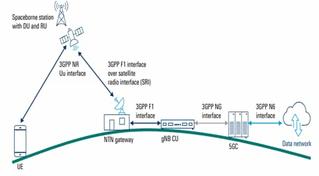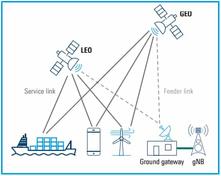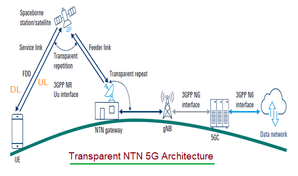5G NTN QoS:Resource type,priority,packet delay & error rate
Advertisement
Introduction : 5G Quality of Service (QoS) framework and its parameters and timers are used appropriately to handle unique challenges of NTN, primarily massive latency. 5G QoS model is built around QoS flows. Each data flow (e.g. video stream, web browsing, voice call) is assigned specific QoS profile. This provide is identified by a scalar value calle a 5G QoS Identifier (5QI).
5G QoS Parameters for NTN
5QI is pre-configured provide which following parameters. 5QI value for NTN use case is 10.
- Resource Type : Whether the flow gets guaranteed bandwidth (GBR) or is Best Effort (i.e. non-GBR)
- Priority Level : The scheduling priority of the data packets
- Packet Delay Budget (PDB) : The maximum time allowed for packet to travel from UE to User Plane Function (UPF) of the core network.
- Packet Error Rate (PER) : The maximum acceptable rate of lost or corrupted packets.
| NTN-focused Parameters | Value/Limit | MEANING |
|---|---|---|
| 5QI | 10 | |
| Rsource Type | Non-GBR | This is a “best-effort” service. The network does not reserve a minimum data rate for the user. It confirms that initial NTN deployments are not targeting services that require guaranteed throughput. |
| Packet Delay Budget | 1100 ms | This is the most critical and defining parameter for NTN QoS. The network is configured to tolerate a packet delay of up to 1.1 seconds. This massive budget is specifically designed to accommodate the round trip time (RTT) of a Geostationary (GEO) satellite link, which is approximately 544 ms, plus any processing and queuing delays in the network. For comparison, a low latency terrestrial service might have a PDB of 10 to 50 ms. |
| Packet Error Rate (PER) | 10^-6 | This is a fairly standard reliability target. It means that no more than 1 in 1,000,000 packets should be lost or corrupted. This level of reliability is necessary for services that rely on TCP (like web browsing and file transfers) to function efficiently. |
Example Services suitable for above mentioned QoS profile are as follows.
- Video (Buffered Streaming)
- TCP Based Traffic such as WWW, Email, Chat, FTP, P2P File Sharing
Implementation perspective
-
The network needs to know when to apply these related QoS parameters. This is achieved with the help of new “RAT” type values. RAT stands for Radio Access Technology which can be any of the following.
RAT = {NR(LEO), NR(MEO), NR(GEO), NR (OTHERSAT)}
- When UE is connected via NTN, it signals its “RAT” Type to the core network’s AMF (Access and Mobility Management Function).
- When the core network sees that UE is connected via “GEO Satellite”, for example, the SMF (Session Management Function) knows to apply QoS profile associated with 5QI = 10, with its 1100 ms delay budget.
Challenges or Limitations of 5G NTN QoS Model
- QoS parameters mentioned confirm that 5G NTN is unsuitable for services requiring low latency such as real time gaming, VoNR, URLLC services like remote surgery or factory automation.
- To support these relaxed QoS profiles, system should extend many protocol timers to prevent connections from timing out due to long RTT.
- 5G NTN is designed to focus on coverage and not compete on performance metric such as latency and throughput.
References
- 3GPP TS 23.501 version 17.5.0 Release 17
Advertisement
 RF
RF

